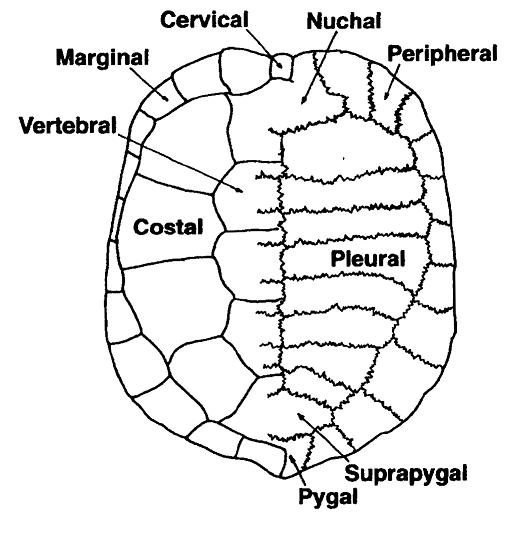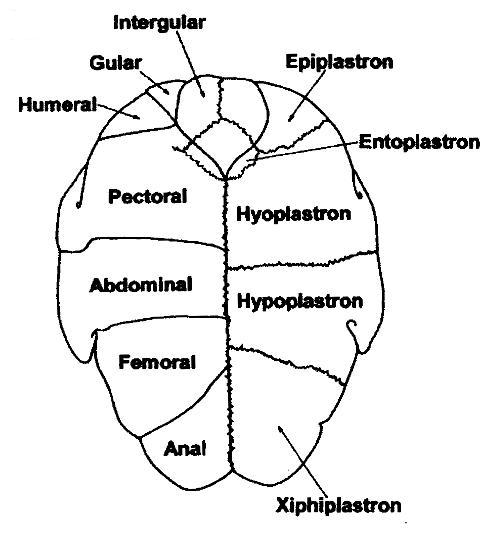|
Yaminuechelys
''Yaminuechelys'' is an extinct genus of chelid turtle from Argentina and the Dorotea Formation of Chile. The genus first appeared during the Late Cretaceous and became extinct during the Late Paleocene.Bona, P. & De la Fuente, M. 2005. Phylogenetic and paleobiogeographic implications of ''Yaminuechelys major'' (Staesche, 1929) new comb., a large long-necked chelid turtle from the early Paleocene of Patagonia, Argentina. ''Journal of Vertebrate Paleontology'' 25(3):569–582. Species The genus contains the following two species: * ''Y. gasperinii'' - Late Cretaceous Allen, Anacleto, La Colonia Formations, Argentina''Yaminuechelys'' at Fossilworks.org * ''Y. maior'' - |
Tiupampan
The Tiupampan ( es, Tiupampense) age is a period of geologic time (64.5–62.5 Ma) within the Paleocene epoch of the Paleogene used more specifically with South American land mammal ages (SALMA). It is the oldest SALMA age and precedes the Peligran age.Tiupampan in the Paleobiology Database
The Paleobiology Database is an online resource for information on the distribution and classification of fossil animals, plants, and microorganisms.
History
The Paleobiology Database (PBDB) originated in the NCEAS-funded Phanerozoic Marine Pale ...
Etymology The age is named after the paleontological site[...More Info...] [...Related Items...] OR: [Wikipedia] [Google] [Baidu] |
Salamanca Formation
The Salamanca Formation is a geologic formation in the Golfo San Jorge Basin of central Patagonia that yields well-preserved, well-dated fossils from the early Paleocene. Studies of these fossils are providing new data on plant and animal diversity following the Cretaceous–Paleogene extinction event, end-Cretaceous extinction event. Material was copied from this source, which is available under a creativecommons:by/4.0/, Creative Commons Attribution 4.0 International License The Salamanca Formation crops out in the San Jorge Basin in southern Chubut and northern Santa Cruz provinces, Argentina, overlying the Cretaceous Chubut Group and is part of the Paleocene and Eocene Río Chico Group. The formation yields abundant plant remains as well as fossils of Invertebrate, invertebrates, marine macrofaunas, Reptile, reptiles, and Mammal, mammals. The formation consists primarily of estuarine to shallow marine deposits. Palynological analysis of the Salamanca Formation shows low flora ... [...More Info...] [...Related Items...] OR: [Wikipedia] [Google] [Baidu] |
Chelidae
Chelidae is one of three living families of the turtle suborder Pleurodira, and are commonly called Austro-South American side-neck turtles. The family is distributed in Australia, New Guinea, parts of Indonesia, and throughout most of South America. It is a large family of turtles with a significant fossil history dating back to the Cretaceous. The family is entirely Gondwanan in origin, with no members found outside Gondwana, either in the present day or as a fossil.Georges, A. & Thomson, S. (2006). "Evolution and Zoogeography of Australian freshwater turtles". In: Merrick, J. R.; Archer, M.; Hickey, G. & Lee, M. (eds.) ''Evolution and Zoogeography of Australasian Vertebrates''. Sydney: Australia. Description Like all pleurodirous turtles, the chelids withdraw their necks sideways into their shells, differing from cryptodires that fold their necks in the vertical plane. They are all highly aquatic species with webbed feet and the capacity to stay submerged for long periods of ... [...More Info...] [...Related Items...] OR: [Wikipedia] [Google] [Baidu] |
Anacleto Formation
The Anacleto Formation is a geologic formation with outcrops in the Argentina, Argentine Patagonia, Patagonian provinces of Mendoza Province, Mendoza, Río Negro Province, Río Negro, and Neuquén Province, Neuquén. It is the youngest formation within the Neuquén Group and belongs to the Río Colorado Group, Río Colorado Subgroup. Formerly that subgroup was treated as a formation, and the Anacleto Formation was known as the Anacleto Member. The type locality of this formation lies west of the city of Neuquén. At its base, the Anacleto Formation conformably overlies the Bajo de la Carpa Formation, also of the Río Colorado Subgroup, and it is in turn unconformity, unconformably overlain by the Allen Formation of the younger Malargüe Group. The Anacleto Formation varies between thick, and consists mainly of claystones and mudstones, purple and dark red in color, deposited in fluvial, lacustrine and floodplain depositional environment, environments. Geodes are often found scat ... [...More Info...] [...Related Items...] OR: [Wikipedia] [Google] [Baidu] |
Dorotea Formation
The Dorotea Formation is a geological formation in the Río de Las Chinas Valley of the Magallanes Basin in Patagonian Chile whose strata date back to the Campanian to Maastrichtian of the Late Cretaceous.Dorotea Formation at .org Description The Dorotea Formation was first described by Katz in 1963. The formation comprises s with frequent |
Chelidae
Chelidae is one of three living families of the turtle suborder Pleurodira, and are commonly called Austro-South American side-neck turtles. The family is distributed in Australia, New Guinea, parts of Indonesia, and throughout most of South America. It is a large family of turtles with a significant fossil history dating back to the Cretaceous. The family is entirely Gondwanan in origin, with no members found outside Gondwana, either in the present day or as a fossil.Georges, A. & Thomson, S. (2006). "Evolution and Zoogeography of Australian freshwater turtles". In: Merrick, J. R.; Archer, M.; Hickey, G. & Lee, M. (eds.) ''Evolution and Zoogeography of Australasian Vertebrates''. Sydney: Australia. Description Like all pleurodirous turtles, the chelids withdraw their necks sideways into their shells, differing from cryptodires that fold their necks in the vertical plane. They are all highly aquatic species with webbed feet and the capacity to stay submerged for long periods of ... [...More Info...] [...Related Items...] OR: [Wikipedia] [Google] [Baidu] |
La Colonia Formation
The La Colonia Formation is a geological formation in Argentina whose strata date back to the Late Cretaceous. Dinosaur remains are among the fossils that have been recovered from the formation.Weishampel et al., 2004, pp.600-604 Originally thought to be Campanian (c.73-72 million years ago) in age or earlier, studies of underlying formations have made a Maastrichtian (70–66 million years ago) age more likely.Rauhut, 2003 It is divided up into three distinct facies, the first is up to thick and consists of conglomerate, the second is by far the thickest at over , consists of siltstone and claystone, with interbeds of claystone/shale and sandstone, the third is less than thick and consists of clay, and probably represents a nearshore marine environment.Gasparini et al., 2015 Flora The paleoflora was known for its aquatic components, ''Paleoazolla'' and ''Regnellidium''. However, recent paleobotanical discoveries at the Cañadón del Irupé locality have revealed the pr ... [...More Info...] [...Related Items...] OR: [Wikipedia] [Google] [Baidu] |
Santonian Genus First Appearances
The Santonian is an age in the geologic timescale or a chronostratigraphic stage. It is a subdivision of the Late Cretaceous Epoch or Upper Cretaceous Series. It spans the time between 86.3 ± 0.7 mya (million years ago) and 83.6 ± 0.7 mya. The Santonian is preceded by the Coniacian and is followed by the Campanian.Gradstein ''et al.'' (2004) Stratigraphic definition The Santonian Stage was established by French geologist Henri Coquand in 1857. It is named after the city of Saintes in the region of Saintonge, where the original type locality is located. The base of the Santonian Stage is defined by the appearance of the inoceramid bivalve '' Cladoceramus undulatoplicatus''. The GSSP (official reference profile) for the base of the Santonian Stage is located near Olazagutia, Spain; it was ratified by the Subcommission on Cretaceous Stratigraphy in 2012. The Santonian's top (the base of the Campanian Stage) is informally marked by the extinction of the crinoid '' Marsupit ... [...More Info...] [...Related Items...] OR: [Wikipedia] [Google] [Baidu] |
Prehistoric Turtle Genera
Prehistory, also known as pre-literary history, is the period of human history between the use of the first stone tools by hominins 3.3 million years ago and the beginning of recorded history with the invention of writing systems. The use of symbols, marks, and images appears very early among humans, but the earliest known writing systems appeared 5000 years ago. It took thousands of years for writing systems to be widely adopted, with writing spreading to almost all cultures by the 19th century. The end of prehistory therefore came at very different times in different places, and the term is less often used in discussing societies where prehistory ended relatively recently. In the early Bronze Age, Sumer in Mesopotamia, the Indus Valley Civilisation, and ancient Egypt were the first civilizations to develop their own scripts and to keep historical records, with their neighbors following. Most other civilizations reached the end of prehistory during the following Iron Age. T ... [...More Info...] [...Related Items...] OR: [Wikipedia] [Google] [Baidu] |
Late Cretaceous Turtles
Late may refer to: * LATE, an acronym which could stand for: ** Limbic-predominant age-related TDP-43 encephalopathy, a proposed form of dementia ** Local-authority trading enterprise, a New Zealand business law ** Local average treatment effect, a concept in econometrics Music * ''Late'' (album), a 2000 album by The 77s * Late!, a pseudonym used by Dave Grohl on his ''Pocketwatch'' album * Late (rapper), an underground rapper from Wolverhampton * "Late" (song), a song by Blue Angel * "Late", a song by Kanye West from ''Late Registration'' Other * Late (Tonga), an uninhabited volcanic island southwest of Vavau in the kingdom of Tonga * "Late" (''The Handmaid's Tale''), a television episode * LaTe, Oy Laivateollisuus Ab, a defunct shipbuilding company * Late may refer to a person who is Dead See also * * * ''Lates'', a genus of fish in the lates perch family * Later (other) * Tardiness * Tardiness (scheduling) In scheduling, tardiness is a measure of a delay in exe ... [...More Info...] [...Related Items...] OR: [Wikipedia] [Google] [Baidu] |
Santonian Life
The Santonian is an age in the geologic timescale or a chronostratigraphic stage. It is a subdivision of the Late Cretaceous Epoch or Upper Cretaceous Series. It spans the time between 86.3 ± 0.7 mya (million years ago) and 83.6 ± 0.7 mya. The Santonian is preceded by the Coniacian and is followed by the Campanian.Gradstein ''et al.'' (2004) Stratigraphic definition The Santonian Stage was established by French geologist Henri Coquand in 1857. It is named after the city of Saintes in the region of Saintonge, where the original type locality is located. The base of the Santonian Stage is defined by the appearance of the inoceramid bivalve ''Cladoceramus undulatoplicatus''. The GSSP (official reference profile) for the base of the Santonian Stage is located near Olazagutia, Spain; it was ratified by the Subcommission on Cretaceous Stratigraphy in 2012. The Santonian's top (the base of the Campanian Stage) is informally marked by the extinction of the crinoid '' Marsupites tes ... [...More Info...] [...Related Items...] OR: [Wikipedia] [Google] [Baidu] |
Paleocene Genus Extinctions
The Paleocene, ( ) or Palaeocene, is a geological epoch that lasted from about 66 to 56 million years ago (mya). It is the first epoch of the Paleogene Period in the modern Cenozoic Era. The name is a combination of the Ancient Greek ''palaiós'' meaning "old" and the Eocene Epoch (which succeeds the Paleocene), translating to "the old part of the Eocene". The epoch is bracketed by two major events in Earth's history. The K–Pg extinction event, brought on by an asteroid impact and possibly volcanism, marked the beginning of the Paleocene and killed off 75% of living species, most famously the non-avian dinosaurs. The end of the epoch was marked by the Paleocene–Eocene Thermal Maximum (PETM), which was a major climatic event wherein about 2,500–4,500 gigatons of carbon were released into the atmosphere and ocean systems, causing a spike in global temperatures and ocean acidification. In the Paleocene, the continents of the Northern Hemisphere were still connected via ... [...More Info...] [...Related Items...] OR: [Wikipedia] [Google] [Baidu] |





